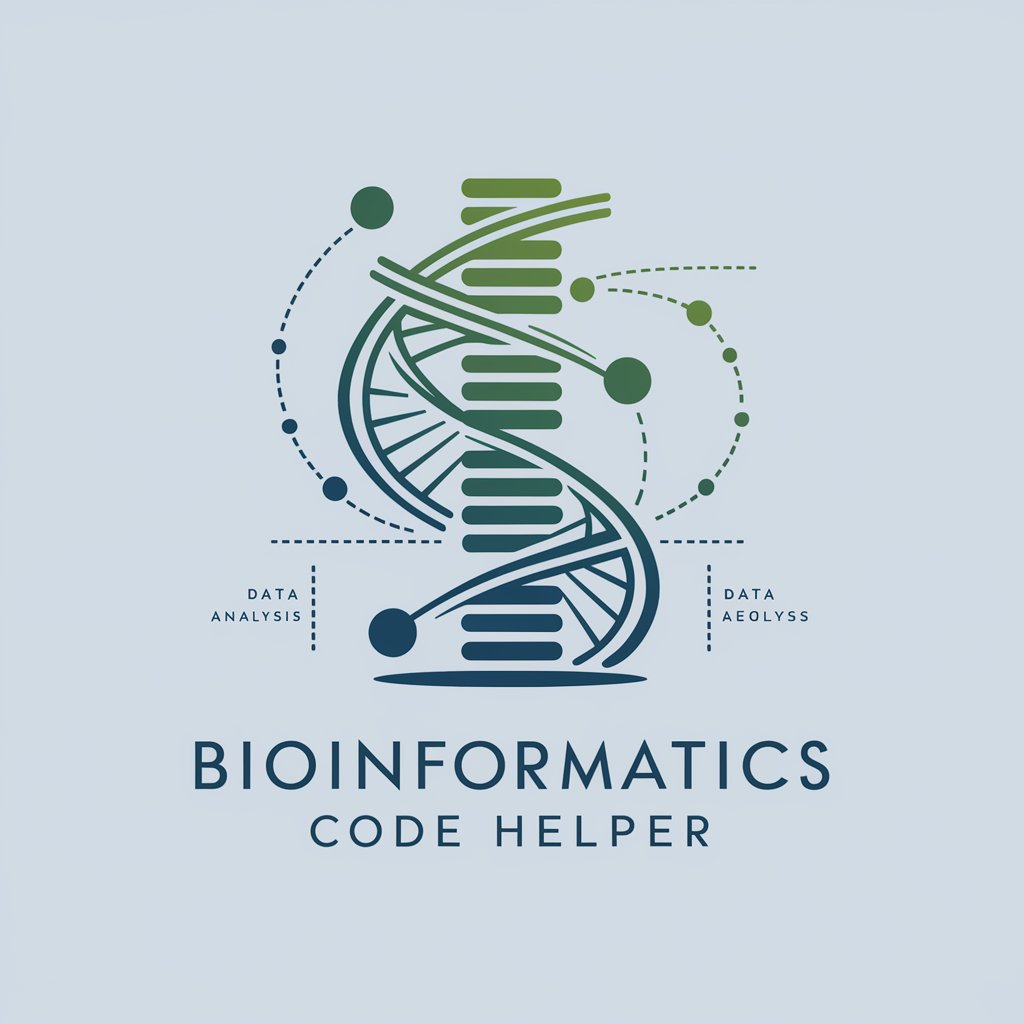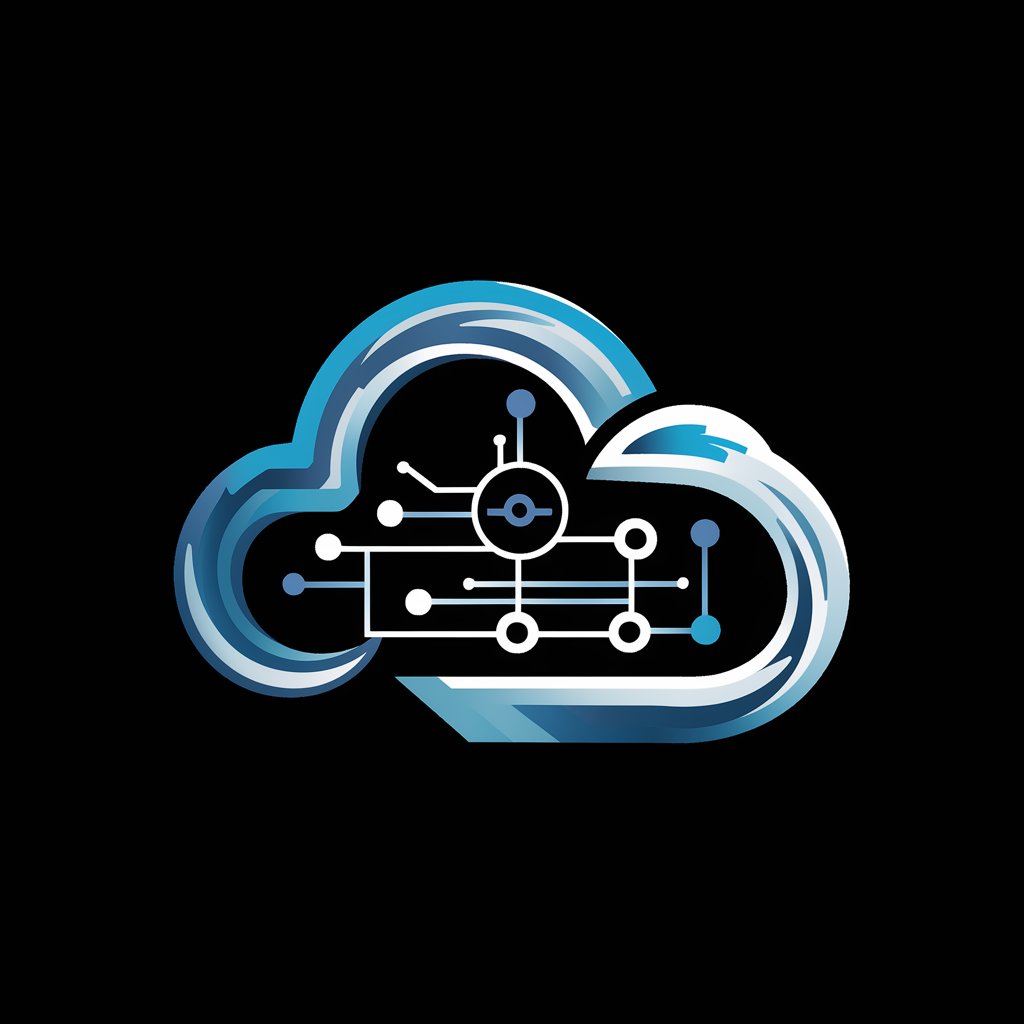Bioinformatics - Bioinformatics Insights

Welcome to Bioinformatics Code Helper.
Powering discovery with AI-driven bioinformatics
Generate a bioinformatics pipeline for RNA sequencing analysis, including quality control and read alignment.
Develop a workflow for exome sequencing data to identify sequence variations and annotate variants.
Create a script to visualize gene expression data from RNA sequencing using R and ggplot2.
Design a bioinformatics pipeline for differential expression analysis, starting from raw RNA-seq data.
Get Embed Code
Introduction to Bioinformatics
Bioinformatics is a specialized field that combines biology, computer science, and information technology to analyze and interpret biological data. It plays a crucial role in the processing of genetic and genomic information, such as DNA sequencing and protein structure prediction. For instance, in a project aiming to stratify lymphoma patients for treatment based on their genetic data, bioinformatics pipelines would be developed using tools like BWA for sequence alignment, GATK for variant calling, and R for statistical analyses. These tools help in identifying sequence variations and RNA signatures that can classify patients into appropriate treatment groups. Powered by ChatGPT-4o。

Main Functions of Bioinformatics
Sequence Alignment
Example
Using BWA to align DNA sequences against a reference genome, such as Homo sapiens GRCh38, facilitating the identification of variants.
Scenario
In a clinical research project, sequence alignment is used to map patient DNA sequences to a reference genome to discover genetic mutations relevant to disease.
Variant Calling
Example
Employing GATK to process aligned sequences and identify genomic variants that may be crucial for disease characterization or treatment response.
Scenario
In oncology research, variant calling helps in identifying specific cancer mutations that could guide targeted therapy decisions.
Statistical Analysis
Example
Using R to perform statistical tests and generate visualizations like survival curves, helping in the interpretation of data and correlation with clinical outcomes.
Scenario
Statistical analysis in bioinformatics can be used to evaluate the effectiveness of different treatments based on genetic profiles, enhancing personalized medicine approaches.
Ideal Users of Bioinformatics Services
Research Scientists
Researchers in genetics, molecular biology, and pharmaceutical sciences, who require the analysis of complex biological data to support their experiments and publications.
Healthcare Professionals
Clinicians and oncologists who need to understand the genetic basis of diseases to make informed treatment decisions, particularly in fields like personalized medicine and cancer genomics.
Bioinformatics Students
Students learning about bioinformatics methodologies, needing to apply computational tools and techniques to real-world biological data sets as part of their academic training.

Using Bioinformatics Effectively
Initiate Your Journey
Start exploring bioinformatics by visiting yeschat.ai, which offers a complimentary trial without the need for login or a ChatGPT Plus subscription.
Identify Your Goal
Clearly define your research objectives. Whether it's sequence analysis, gene expression studies, or structural bioinformatics, understanding your goal is crucial.
Gather Your Data
Collect and organize your biological data. This might include sequencing reads, protein structures, or gene expression profiles, depending on your project's needs.
Select Appropriate Tools
Choose bioinformatics tools and software that align with your objectives. This selection is critical for data analysis, interpretation, and achieving reliable results.
Analyze and Interpret
Conduct your analysis using the selected tools, then critically interpret the results. Understanding the biological significance of your data is as important as the analysis itself.
Try other advanced and practical GPTs
Girl Dads Club Companion
AI-powered Parenting Support

Firecracker
Empowering Mothers with AI-Driven Insights

✨Sassy Solace✨
Sassiness powered by AI

Mystic Insights
Unlock the mysteries of names, stars, and tarot.

Mystic Oracle
Empowering Decisions with AI Insight

Mystic Visionary
Unlock Your Potential with AI Insight

Santa's Helper
Tailored Gifts with AI Insight

Italian Chef
Unleash Your Inner Chef with AI

Carmine's Allergy Assistant
Navigating dining with AI-driven safety.

Arquiteto de Nuvem (CloudAWS)
Harnessing AI for Smarter Cloud Solutions

JurisTech GPT
Powering Legal Tech with AI

Consultor Estoico
Harness Ancient Wisdom with AI

Bioinformatics Q&A
What is the role of bioinformatics in modern biology?
Bioinformatics plays a pivotal role in modern biology by enabling the storage, analysis, and interpretation of large-scale biological data. It bridges computational techniques with biological insights, aiding in gene discovery, molecular modeling, and understanding evolutionary biology.
How can I choose the right bioinformatics tools for my project?
Selecting the right tools depends on your project's specific needs. Consider the type of data, the analysis objectives, and the computational resources available. Review literature and tool documentation, and seek recommendations from the bioinformatics community.
What are some common challenges in bioinformatics?
Bioinformatics challenges include handling large data volumes, integrating data from disparate sources, ensuring computational efficiency, and interpreting complex results in a biologically meaningful way.
How does bioinformatics contribute to personalized medicine?
Bioinformatics facilitates personalized medicine through the analysis of genomic data, helping to tailor medical treatments to individual genetic profiles. This approach improves treatment efficacy and reduces adverse drug reactions.
Can bioinformatics predict the structure of proteins?
Yes, bioinformatics techniques like homology modeling and molecular dynamics simulations are used to predict protein structures. These predictions are crucial for understanding protein function and designing drugs.
